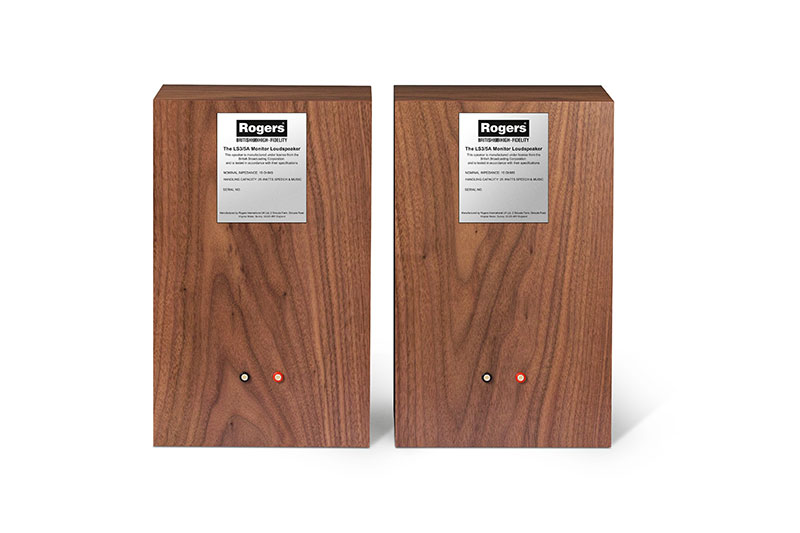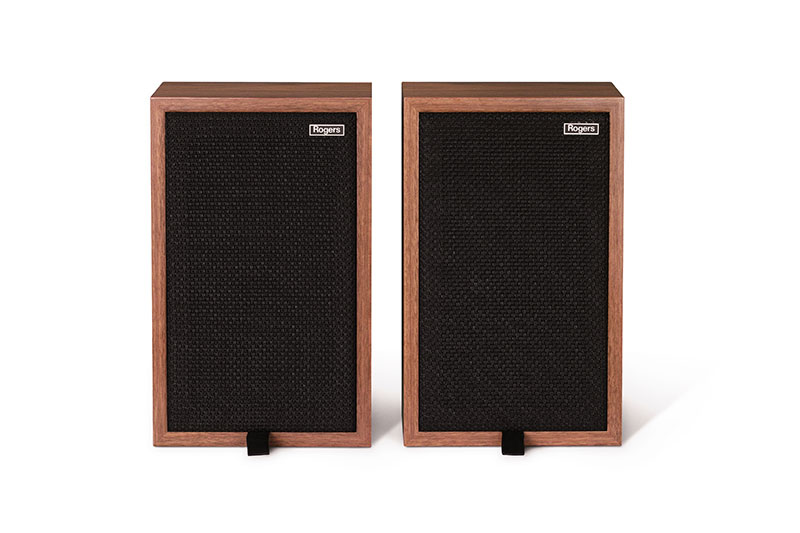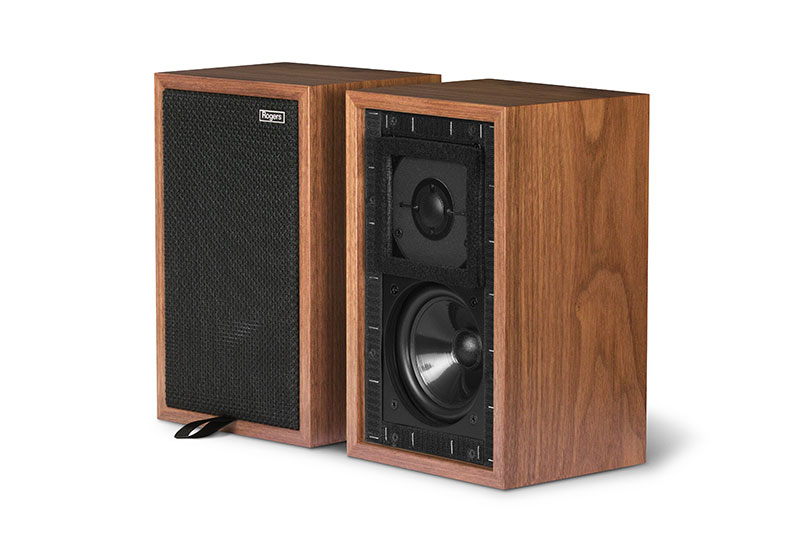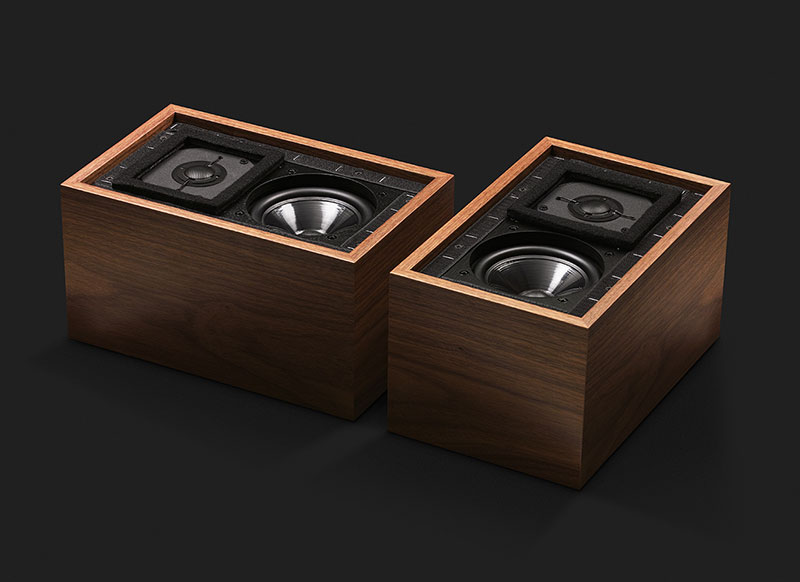Logowanie
Mikołaj - ten to ma gest!
Elton John, The Mamas & The Papas, Cat Stevens, Rod Stewart, Bobbie Gentry, Stevie Wonder, Engelbert Humperdinck
Memory Lane
Edycja Numerowana - 1000 egzemplarzy w skali światowej
RACHMANINOV, Eiji Oue, Minnesota Orchestra
Symphonic Dances / Vocalise
Best Recordings of 2001!!! NAJCZĘŚCIEJ KUPOWANA PŁYTA Z RR!
Karnawał czas zacząć!
Music of Love - Hi-Fi Latin Rhythms
Samba : Music of Celebration
AUDIOPHILE 24BIT RECORDING AND MASTERING
CHOPIN, LISZT, DEBUSSY, DVORAK, Gerhard Oppitz
Dances romantiques - A fantastic Notturno
Wzorcowa jakość audiofilska z Clearaudio
Winylowy niezbędnik
ClearAudio
Double Matrix Professional - Sonic
najbardziej inteligentna i skuteczna pralka do płyt winylowych wszelkiego typu - całkowicie automatyczna
Monitory ROGERS
Rogers Classic LS3/5a 15Ohm - sygnowane przez BBC
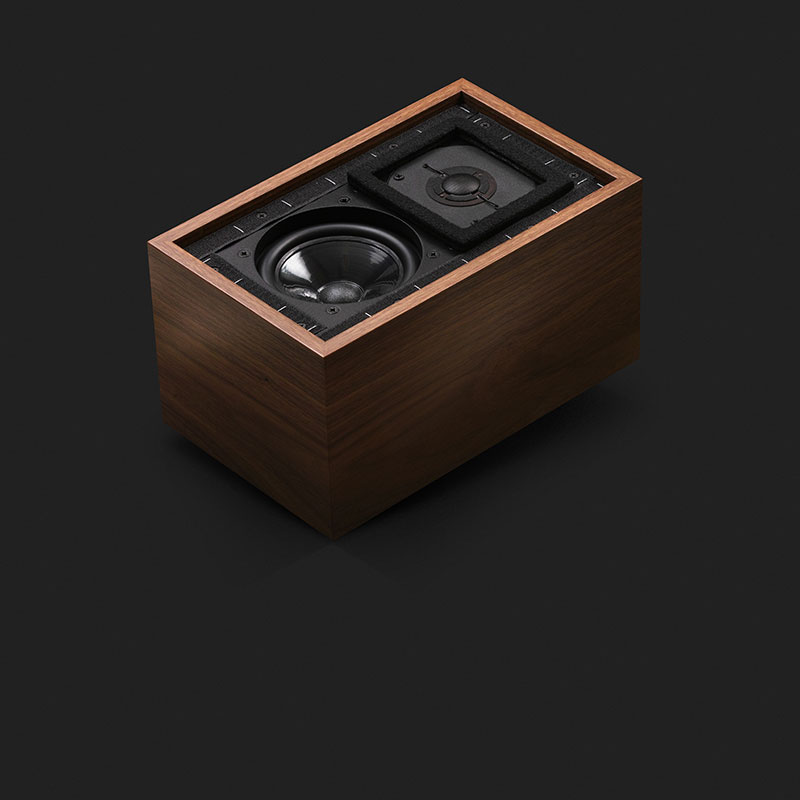
Technical Specifications.
Classic LS3/5a 15 Ohm Monitor Speaker
System Type: Two way infinite baffle ( closed box)
Frequency Response: 70Hz – 20KHz +/- 3dB
Bass/Midrange Driver: 138mm polymer cone
Tweeter: 19mm mylar dome
Crossover Frequency: 3KHz
Sensitivity: 83dB for 2.83V at 1M
Nominal Impedance: 15 Ohms
Recommended Amplifier Range: 30-80 Watts ( Warning do not connect to any amplifier exceeding range as damage may result )
Cabinet: Cabinet 12mm Birch ply critically damped
Grille: Black Tygan
Finish: Selected real wood veneers
Recommended placement: On rigid mass loaded stands. 200mm from rear wall, clear of side walls, angled in so axis cross just in front of the listener.
Dimensions: 188 x 304 x 164 ( W x H x D )
Weight: 5.12Kg each speaker.
Recenzje:
Hi-Fi News (England) - Rogers Ls3/5a Classic
Audiophile (Hong Kong) -Rogers LS3/5a 15 Ohm
Technical Specifications.
Classic LS3/5a 15 Ohm Monitor Speaker
System Type: Two way infinite baffle ( closed box)
Frequency Response: 70Hz – 20KHz +/- 3dB
Bass/Midrange Driver: 138mm polymer cone
Tweeter: 19mm mylar dome
Crossover Frequency: 3KHz
Sensitivity: 83dB for 2.83V at 1M
Nominal Impedance: 15 Ohms
Recommended Amplifier Range: 30-80 Watts ( Warning do not connect to any amplifier exceeding range as damage may result )
Cabinet: Cabinet 12mm Birch ply critically damped
Grille: Black Tygan
Finish: Selected real wood veneers
Recommended placement: On rigid mass loaded stands. 200mm from rear wall, clear of side walls, angled in so axis cross just in front of the listener.
Dimensions: 188 x 304 x 164 ( W x H x D )
Weight: 5.12Kg each speaker.
Recenzje:
Hi-Fi News (England) - Rogers Ls3/5a Classic
Audiophile (Hong Kong) -Rogers LS3/5a 15 Ohm
- Monitory ROGERS
Najbardziej zaawansowana audiofilsko konstrukcja słynnych LS3/5a, licencjonowana przez BBC
Wersja 15 Ohm. Ta legendarna. Zbudowana z uwzględnieniem ponad 40 lat postępu technicznego, technik pomiarowych, precyzji wykonania, ale niezmiennie niedoścignionego w wierności przekazu naturalnego brzmienia - ducha tych głośników. Fenomen... Tylu ludzi, z zaangażowaniem tak wyrafinowanych metod obliczeniowych nie są w stanie dorównać koncepcji Jimma Rogersa. Ja nie spotkałem głośników, które tak wiernie i detalicznie. Tak proporcjonalnie i adekwatnie oddawałyby to, co mikrofony zarejestrowały, a taśma zanotowała. Głośniki dla ludzi, którym nie starcza rytm, prosta, prymitywna melodia, elektryczny, nieprawdziwy bas. To są głośniki dla tych, którzy potrafią zinterpretować rentgenologiczny, tomograficzny zapis dźwięku. Dla melomanów zdolnych wyłowić każdy odcień brzmienia, najdrobniejsze odbarwienie dźwięku. Classic LS3/5a pozwolą i umożliwią pełną wiwisekcję, analityczny wgląd w architekturę rejestracji. Jak rzecz porównać? Oto przed nami ściana... lasu. Dla jednych, którzy ruszą z impetem w stronę drzew - okaże się ona tanią tapetą, o którą roztrzaskają swój audiofilsko przemądrzały nos. Dla innych - ta tapeta stanie się trójwymiarową przestrzenią, oglądalną z każdej strony, pozwalająca kluczyć między drzewami, odczuwając miękkość muzycznego runa leśnego. To oni spotkają w tym muzycznym lesie Czerwonego Kapturka, który spłakany, z lekko rozdartą sukienka i poczochranym loczkiem poprosi o pomoc i opiekę. Ale tu rozpocznie się już zupełnie inna opowieść... N'est-ce-pas? ****** Cena uzależniona od kursu waluty Rogers over seventy years of excellence. For over seventy years the name of Rogers has earned the high regard of music lovers worldwide with the high standard of musical integrity it’s products have consistently achieved. Founded in 1947 in North London, by Jim Rogers, a highly successful range of thermionic vale equipment was produced, including several exquisitely built amplifiers. Later in the 1960’s and early seventies, Rogers was one of the first British companies to lead the way with good sounding transistor amplifiers and tuners. During this period many loudspeaker designs from a new factory in Catford, London, culminating in 1970 with the introduction of the LS3/6 studio monitor. This was the first BBC licensed design and heralded a significant advance in moving coil loudspeaker performance. This was followed four years later by another BBC licensed design, the legendary LS3/5a. Undoubtedly one of the all-time greats in loudspeaker design it has inspired more interest and critical acclaim than almost any other product. Now entering its forty fourth year of production it continues to astonish and impress listeners the world over with its fine musical performance. ***** Installation. Position your speakers approximately where you want them and select cable runs of an appropriate length and terminations. Designed specifically for outside broadcasting, the Classic LS3/5a can be positioned close to a boundary wall, however do not position tightly into the corners of a room. Alternatively placing on high mass loaded stand in free space can offer an increase in perceived space and depth of playback material. Note: the connections on the back of the speaker are single wire with 4mm banana sockets. The correct frequency response ( tonal balance ) is achieved with the grilles in place. Removal of the grilles will compromise high frequency and mid frequency performance. Switch off the amplifier. Identify the left speaker of the pair as the speaker on the left when viewed from the listening position. Connect the black terminal on the amplifier left channel to the black terminal on the left loudspeaker. Then connect the red terminal on the amplifier left to the red terminal on the left loudspeaker. Repeat these connections for the right-hand channel. Check the integrity of the connections and that there are no shorted wires. Turn down the volume and switch on the amplifier. Select a known source and turn up the volume cautiously. New speakers require a “break in” period. This enables the drive units to settle into their normal working routine and electrical components in the crossover to “bed in”. A minimum of fifty hours playing will see the speakers “broken in” additional playing will continue to improve the overall sound quality. Connecting cables can have an important effect on the final sound quality. Similar lengths of good quality speaker cable should be used. Your dealer can best advise you of suitable cables for your installation. Longer cable runs will generally require heavier gauge cables. All system connections should be clean and tight. Periodically cleaning of all signal path connections in your system is recommended. Simply breaking and remaking each connection ensuring a positive contact is all that is needed. Caring for your loudspeakers. The real wood veneer used on the Classic LS3/5a can be maintained by regular dusting and gentle cleaning with furniture polish and a micro fiber cloth. The grille cloth is best kept clean with a soft brush or light vacuum. Do not use undue pressure as you may damage the drive units beneath the grille. Try not to position your speakers in direct sunlight as over time this will cause the veneer to fade. ****** Resume - (nie dla audiofili): - ustaw głośniki, tam, gdzie chcesz. Ale unikaj narożników pokoju - staraj się, aby kable połączeniowe miały tę samą długość: przy dłuższych odcinkach średnica kabla powinna być większa niż przy połączeniu krótkim - zacznij rozkoszować się dźwiękiem po około 50 godzinach od ich podłączenia do systemu. Tyle czasu trzeba, aby głośniki nabrały 'rumieńców'. - regularnie czyść połączenia i styki; to ważne - i na koniec uwaga najważniejsza: te głośniki służą do słuchania muzyki. I tylko w tym celu ich używaj. Potrzebę innych doznań stymulowanych dźwiękiem realizuj z pomocą kolumn innego pochodzenia. ** * * * Ponieważ wiele osób uwielbia czytać informacje, których kompletnie nie rozumie i które do normalnego obcowania z muzyką są całkowicie zbędne - w kolumnie obok - dane techniczne głośników.





























